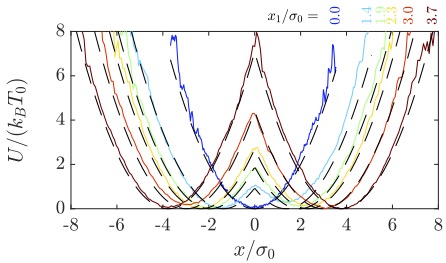Salambô Dago, Nicolas Barros, Jorge Pereda, Sergio Ciliberto, Ludovic Bellon
in Bouju, X., Joachim, C. (eds) Crossroad of Maxwell Demon. CMD 2023. Advances in Atom and Single Molecule Machines. Springer, Cham.
doi: 10.1007/978-3-031-57904-2_6
arXiv: 2311.12687
Virtual potentials are an elegant, precise and flexible tool to manipulate small systems and explore fundamental questions in stochastic thermodynamics. In particular double-well potentials have applications in information processing, such as the demonstration of Landauer’s principle. In this chapter, we detail the implementation of a feedback loop for an underdamped system, in order to build a tunable virtual double-well potential. This feedback behaves as a demon acting on the system depending on the outcome of a continuously running measurement. It can thus modify the energy exchanges with the thermostat and create an out-of-equilibrium state. To create a bi-stable potential, the feedback consists only in switching an external force between two steady values when the measured position crosses a threshold. We show that a small delay of the feedback loop in the switches between the two wells results in a modified velocity distribution. The latter can be interpreted as a cooling of the kinetic temperature of the system. Using a fast digital feedback, we successfully address all experimental issues to create a virtual potential that is statistically indistinguishable from a physical one, with a tunable barrier height and energy step between the two wells.

